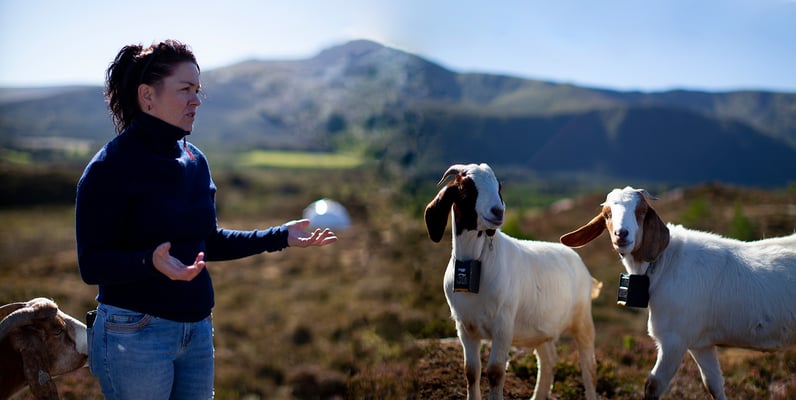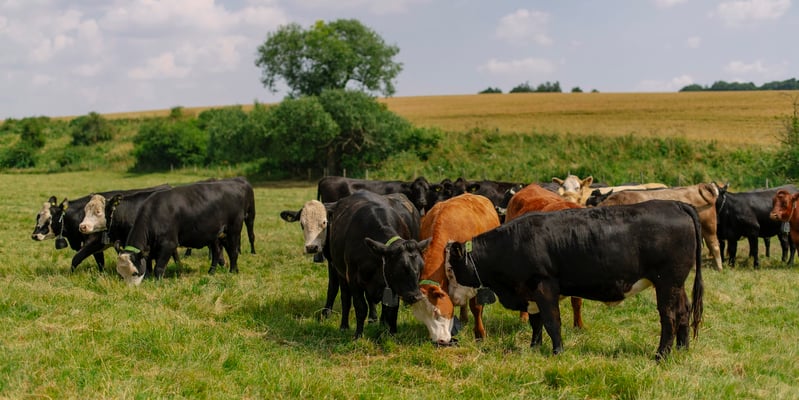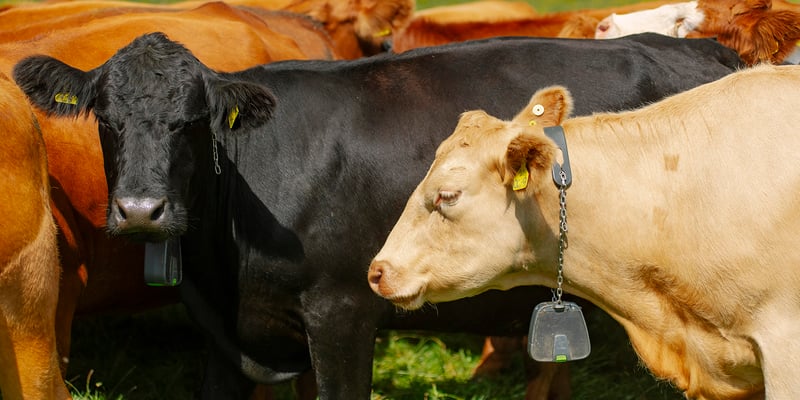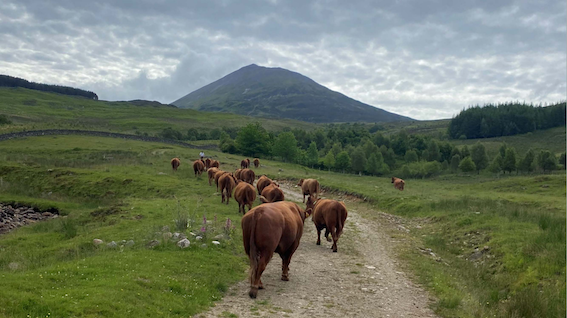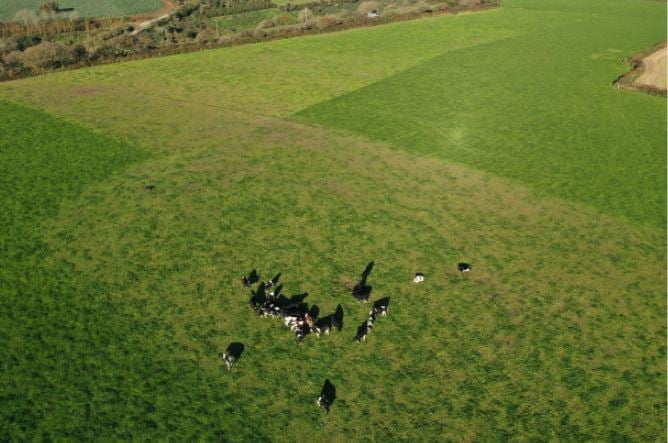
The economic and environmental benefits of managed grazing
/Philip-Synnestvedt.jpg?width=65&height=65&name=Philip-Synnestvedt.jpg)
Managed grazing means regularly moving livestock to new pastures in a planned way, which avoids overgrazing by providing plants with a rest period to allow them time to recover. Managed grazing has many benefits when done correctly. Within this article, we examine how managed grazing benefits two main areas: farm productivity and the environment.
‘Overgrazing’ is when a plant is grazed before it has fully recovered. It’s normally caused by keeping animals in one place for too long or by not providing a sufficient rest period between grazings.
Different types of managed grazing include Rotational Grazing, Mob Grazing, Cell Grazing and Adaptive Multi-Paddock Grazing.
1. How managed grazing improves farm productivity and profitability
In terms of farm productivity and profitability, managed grazing offers three key advantages:
Increased pasture productivity
Stocking density is higher with managed grazing techniques than with continuously grazed systems. In this way, a paddock's pasture productivity is increased, since the animals are encouraged to utilise as much pasture as they can and waste less. This results in greater productivity.
With managed grazing, animals are allocated to a defined area (paddock), which contains enough pasture for normally 1–5 days (depending on technique), compared to set stocking, where animals continuously graze the same area for many days or weeks. This means the animals in a managed grazing system are less selective, consuming all of the plants before moving to the next paddock. This increases pasture utilisation as well as provides the plants with a rest period so that they can fully recover before the next grazing event.
Improved pasture quantity and quality
With managed grazing, plant yield is increased. Leaves are the energy production factory of forage plants. Grazing should be managed so that there is always sufficient leaf area to intercept sunlight. This is achieved by managing how long animals spend in one paddock, to prevent them grazing too low. Aiming to leave the plant with some leaves so that it can quickly recover.
Young, tender plant growth is always high quality (it’s less fibrous than older growth). Managed grazing means animals are always returning to new plant growth, ensuring high-quality feed, which in turn increases animal performance.
Reduced housing period
Winter feed usually makes up at least 25% of livestock variable costs, and when combined with the other costs associated with winter housing it is normally around 50%. One of the best indicators of profitability for a livestock enterprise is the length of the housing period. Generally, the shorter it is, the more profitable the enterprise.
Reducing the winter housing or winter feeding period by extending the grazing season offers a significant cost saving. Grazed grass is ½ the cost of silage. By increasing the amount of pasture grown, particularly in the autumn, managed grazing means animals can stay outside for longer without the need for supplementary feed.
Improved grazing management in the autumn also means there is more pasture available in the spring, meaning animals can be turned out earlier. Although the weather can make ground conditions challenging, this can be managed by choosing the lighter animals to graze and moving them regularly.
Increased nutritional value of meat and milk
Managed grazing allows cows to graze on pasture for a greater number of days during the year, resulting in healthier and more nutritious products. There's evidence that pasture feeding improves milk's nutrient profile. In general, milk from cows fed pasture-based diets has a higher fat and protein content, and more nutritional value, than milk from cows fed a diet which is higher in grains and soya.
Research also suggests that pasture-fed meat is healthier. It tends to be lower in total fat and has a better ratio of omega-3 to omega-6 fatty acids. Milk and meat from pasture-fed animals are also higher in vitamins A (β-carotene) and E (α-tocopherol).
According to the Pasture-Fed Livestock Association (PFLA) – which brings together British farmers committed to producing high-quality food in a more natural way – pasture-fed meat and dairy products may offer a powerful defense against heart disease, diabetes and cancer due to their high levels of conjugated linoleic acid (CLA).
The improved nutritional profile of pasture-fed milk and meat resonates well with consumers looking for healthy, natural and sustainable meat and dairy products. Additionally, livestock farmers receive a premium for pasture-fed meat and milk. They can lower costs and increase profitability by moving away from high-production, high-cost systems that rely on purchased grains and concentrate feeds.
Related: What are the benefits of virtual fencing?
2. How managed grazing benefits farm environment
Managed grazing has many benefits for the environment on a farm. Here are the seven most important ones.
Increased regrowth
In a managed grazing system, plants are permitted to rest and accumulate growth after being grazed by animals, so they are not grazed again before they have recovered their energy reserves.
Nutrient recycling is improved
Managed grazing ensures grazing animals spend equal amounts of time in all areas of the field and farm. Consequently, urine and manure – important sources of nutrients – are more evenly distributed.
Weeds are less prevalent
Managed grazing reduces livestock's ability to selectively graze, and therefore more weeds are grazed (and at a younger growth stage, when they are more palatable). Most weeds don’t like this regular grazing event (which favours more productive plants like grasses and legumes), and this means they are often «grazed out» of the pasture.
Easier legume establishment
The benefits of legumes are numerous, and with nitrogen fertiliser prices at a record high, they are more valuable than ever. However, to establish they require light, otherwise young plants are out-competed by grasses. Managed grazing allows the height of pastures to be managed and can help legumes establish and persist.
Stronger plant root systems
Root growth stops or is severely slowed when plants are grazed too low or for too long without a rest period to allow time to recover. This problem is avoided by managed grazing, which in turn promotes large root systems that make plants more resistant to drought. The result is usually healthier plants and more grazing days per year.
Enhanced soil quality
Growing plants that are kept in their vegetative (leafy) state through animals grazing events are actively storing carbon in the soil. In addition, the more pasture grown and eaten each year (through grazing management), the greater the return of organic matter to the soil. This process feeds the biology and fungi, which in turn provide the plants with nutrients. The organic carbon stores water, increasing pasture resilience to dry periods.
Better biodiversity
To maintain high biodiversity of semi-natural grasslands, management by grazing is needed. Maintaining a mosaic across landscapes of grazed and ungrazed sites, and different grazing regimes, can benefit the various plant and wildlife species.
Summary
Managed grazing increases the productivity of pastures and livestock by working with the plant's natural growth pattern. Overgrazing results in low productivity, bare soil, pasture degeneration and reduced forage production. Ultimately, this means lower output and more cost for the farmer.
There are two ways to consider managed grazing's potential to increase production. We can keep more animals. Alternatively, we can reduce inputs, such as nitrogen fertiliser or purchased feed, while maintaining the same output but with a lower variable cost.
It is not unusual for farmers to improve productivity by 50% by following the principles of managed grazing. This can allow some areas that were marginal for livestock or forage production to be used for nature, increasing biodiversity and ultimately benefiting the overall farming business.
There is no more cost-effective way to improve your farm's health and productive capacity than by improving your grazing management.

